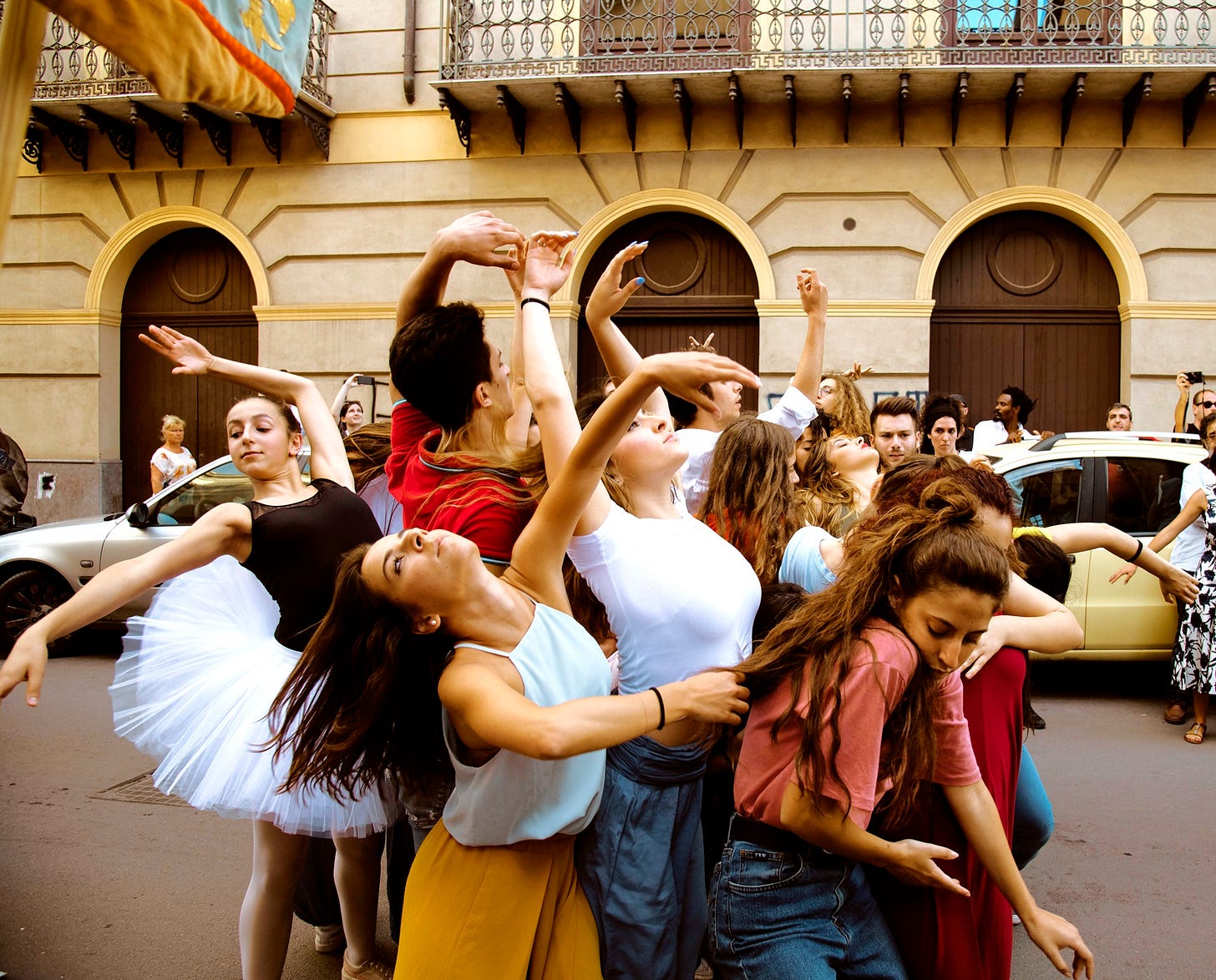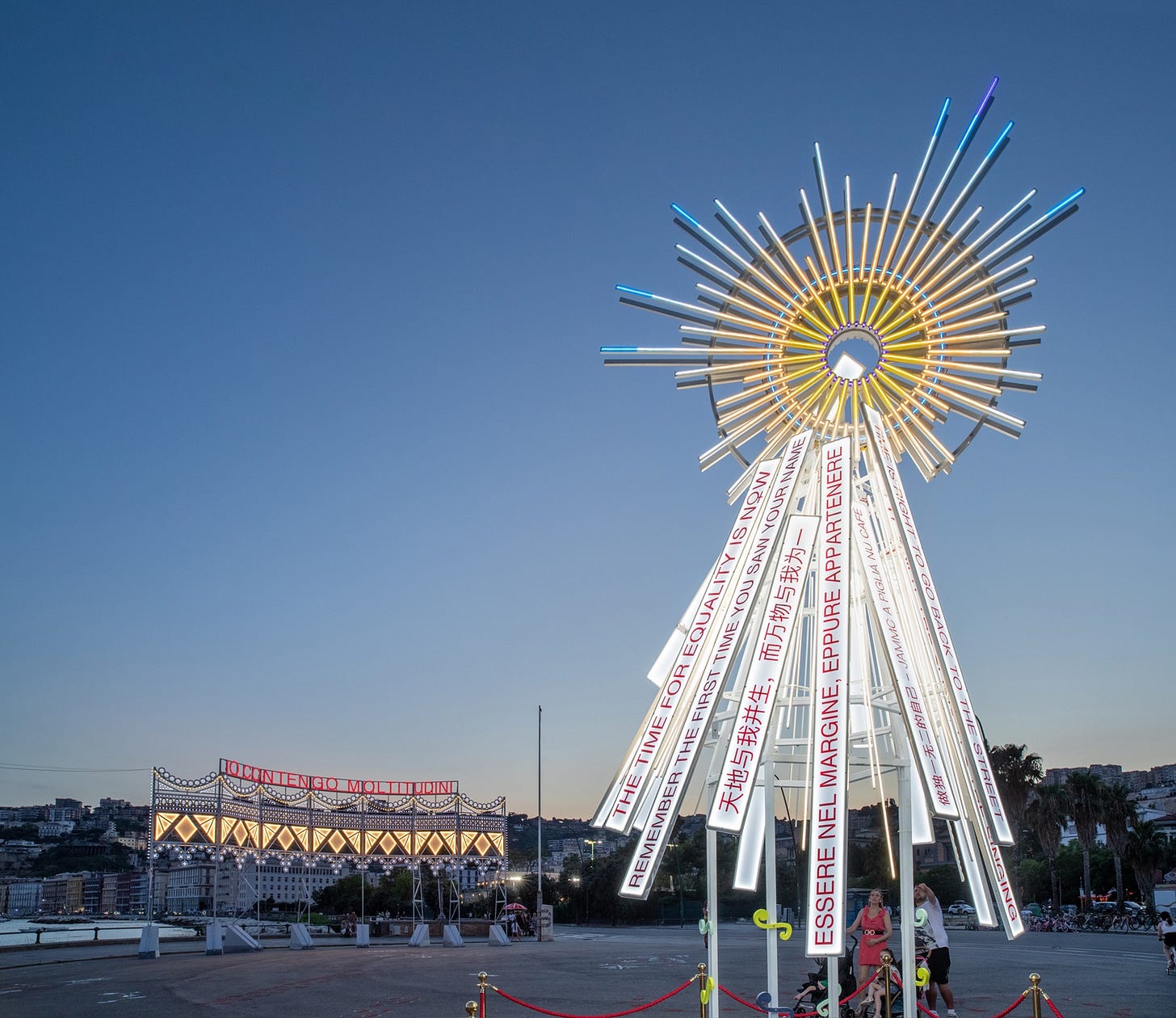Share the post "Believing in the Creative Potential of Each Individual and in the Collective Transformative Power. Interview with Multidisciplinary Artist Marinella Senatore"
Tell us what you do and your beginnings.
In 2012, I founded the School of Narrative Dance, a nomadic free of free-of-charge project that explores collective storytelling and emancipation through the body. My approach refuses fixed categories, focusing instead on activating participation and fostering empowering experiences.
What does your work aim to say?
At its core, my practice challenges traditional hierarchies – between artist and audience, teacher and student – fostering horizontal, shared creative experiences, exploring new ideas of community building and collective rituals, gathering thousands of people every time.
I believe in the creative potential of every individual and in the transformative power of collective agency.

Where do you find inspiration for your art?
Dance, somatic, and mindful movements are also integral to my practice, not only as a performative language but also as a metaphor for resilience and emancipation. Additionally, I often reference popular traditions, rituals, and historical narratives of the many communities around the globe I have the chance to work with. Since 2006, I have worked with more than 8 million people.
Participation is both a theoretical concept and a methodology in my practice. Light and vernacular traditions are deeply rooted in Southern Italian rituals: i.e., “luminarie” -lighting structures which historically transformed public spaces into sites of communal celebration- are among my favourite installations focused on the ideas of “bodies in alliance” and assembly.

Could you give us some insight into your creative process?
Whether I’m invited by a museum or working in a public space, I develop relationships with local groups, often through grassroots methods like flyers or community press, and radio. Having worked in more than 24 countries so far, this participatory approach has always served as my starting point.
Even my most intimate works, like drawings or collages, are shaped by these encounters.
Conitnue on MuseumWeek Magazine.
